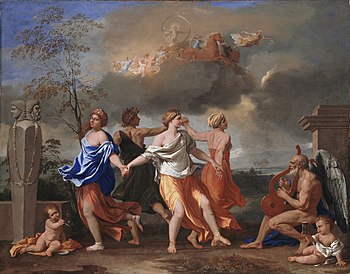
Anthony Dymoke Powell was an English novelist best known for his 12-volume work A Dance to the Music of Time, published between 1951 and 1975. It is on the list of longest novels in English.

Casanova's Chinese Restaurant is a novel by Anthony Powell (ISBN 0-09-947244-9). It forms the fifth volume of the twelve-volume sequence A Dance to the Music of Time, and was originally published in 1960. Many of the events of the novel were included in the television adaptation broadcast on the United Kingdom's Channel 4 in 1997, comprising part of the second of four episodes. There was also an earlier, more comprehensive, BBC Radio adaptation.
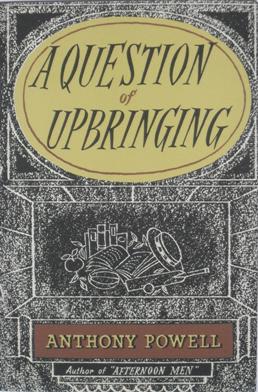
A Question of Upbringing is the opening novel in Anthony Powell's A Dance to the Music of Time, a twelve-volume cycle spanning much of the 20th century.
Susan Hilary Spurling CBE FRSL is a British writer, known for her work as a journalist and biographer.

A Buyer's Market is the second novel in Anthony Powell's twelve-novel series A Dance to the Music of Time. Published in 1952, it continues the story of narrator Nick Jenkins with his introduction into society after boarding school and university.

The Acceptance World is the third book of Anthony Powell's twelve novel sequence, A Dance to the Music of Time. Nick Jenkins continues the narration of his life and encounters with friends and acquaintances in London, between 1931 and 1933. In an analysis of Powell's absorbing interest in literary and visual art McSweeney highlights his use of a reference to Joseph Conrad in a virtuoso description of a private hotel in Bayswater.

At Lady Molly's is the fourth volume in Anthony Powell's twelve-novel sequence, A Dance to the Music of Time. Winner of the James Tait Black Memorial Prize 1957, At Lady Molly's is set in England of the mid-1930s and is essentially a comedy of manners, but in the background, the rise of Hitler and of worldwide Fascism are not ignored. The driving theme of At Lady Molly's is married life; marriages – as practised or mooted – among the narrator's acquaintances in bohemian society and the landed classes are pondered. Meanwhile, the career moves of various characters are advanced, checked or put on hold.

The Kindly Ones is a novel by Anthony Powell that forms the sixth in his twelve-volume sequence, A Dance to the Music of Time. The book's title relates to the placatory name given to the Furies of Greek mythology and chiefly addresses the period just before and after Britain enters World War II. The book is dedicated "For R.W.K.C.", the biographer and historian R. W. Ketton-Cremer.
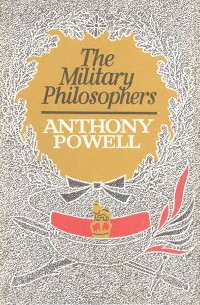
The Military Philosophers is the ninth of Anthony Powell's twelve-novel sequence A Dance to the Music of Time. First published in 1968, it covers the latter part of Nicholas Jenkins' service in World War II. It is the last in Powell's war trilogy, and Jenkins is assigned to a War Office Section with the Allies of World War II.
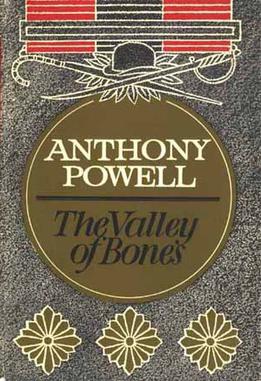
The Valley of Bones is the seventh novel in Anthony Powell's twelve-volume series A Dance to the Music of Time. Published in 1964, it is the first of the war trilogy.
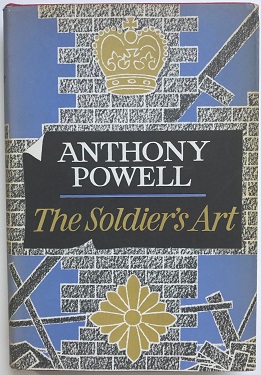
The Soldier's Art is the eighth novel in Anthony Powell's twelve-volume masterpiece A Dance to the Music of Time, and the second in the war trilogy. The title is from the poem by Robert Browning, Childe Roland to the Dark Tower Came, fifth line, “think first, fight afterwards – the soldier’s art.”

Books Do Furnish a Room is a novel by Anthony Powell, the tenth in the twelve-novel sequence A Dance to the Music of Time. It was first published in 1971 and, like the other volumes, remains in print.

Temporary Kings is a novel by Anthony Powell, the penultimate in his twelve-volume novel, A Dance to the Music of Time. It was published in 1973 by Heinemann and remains in print as does the rest of the sequence. It takes place at a fictional 1958 symposium in Venice.

Hearing Secret Harmonies is the final novel in Anthony Powell's twelve-volume series, A Dance to the Music of Time. It was published in 1975, twenty-four years after the first book, A Question of Upbringing, appeared in 1951. No other novel series is based on the formal pictorial principles as A Dance to the Music of Time. The book ends with a torrential passage from The Anatomy of Melancholy by Robert Burton.
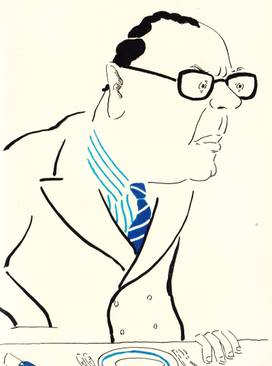
Kenneth Widmerpool is a fictional character in Anthony Powell's novel sequence A Dance to the Music of Time, a 12-volume account of upper-class and bohemian life in Britain between 1920 and 1970. Regarded by critics as one of the more memorable characters of 20th century fiction, Widmerpool is the antithesis of the sequence's narrator-hero Nicholas Jenkins. Initially presented as a comic, even pathetic figure, he becomes increasingly formidable, powerful and ultimately sinister as the novels progress. He is successful in business, in the army and in politics, and is awarded a life peerage. His only sphere of failure is his relationships with women, exemplified by his disastrous marriage to Pamela Flitton. The sequence ends with Widmerpool's downfall and death, in circumstances arising from his involvement with a New Age-type cult.

From a View to a Death is the third novel by the English writer Anthony Powell. It combines comedy of manners with Powell’s usual interest in the subtleties of British 20th-century society in a bitterly funny narrative. Here, Powell begins to write in the mode that he would perfect in A Dance to the Music of Time.
Adrian Maurice Daintrey, RWA (1902–1988) was a British portrait and landscape painter.

King Cophetua and the Beggar Maid is an 1884 painting by the Pre-Raphaelite artist Edward Burne-Jones. The painting illustrates the story of 'The King and the Beggar-maid", which tells the legend of the prince Cophetua who fell in love at first sight with the beggar Penelophon. The tale was familiar to Burne-Jones through an Elizabethan ballad published in Bishop Thomas Percy's 1765 Reliques of Ancient English Poetry and the sixteen-line poem The Beggar Maid by Alfred, Lord Tennyson.

A Dance to the Music of Time is a painting by Nicolas Poussin in the Wallace Collection in London. It was painted between c. 1634 and 1636 as a commission for Giulio Rospigliosi, who according to Gian Pietro Bellori dictated its detailed iconography. The identity of the figures remains uncertain, with differing accounts.
A Dance to the Music of Time is a British four-part television drama series based on the book series of the same name by Anthony Powell. The series was also written by Anthony Powell with Hugh Whitemore as co-writer. The series was produced by Table Top Productions and directed by Christopher Morahan and Alvin Rakoff. It was first broadcast on Channel 4 on 9 October 1997 over four consecutive weeks.
